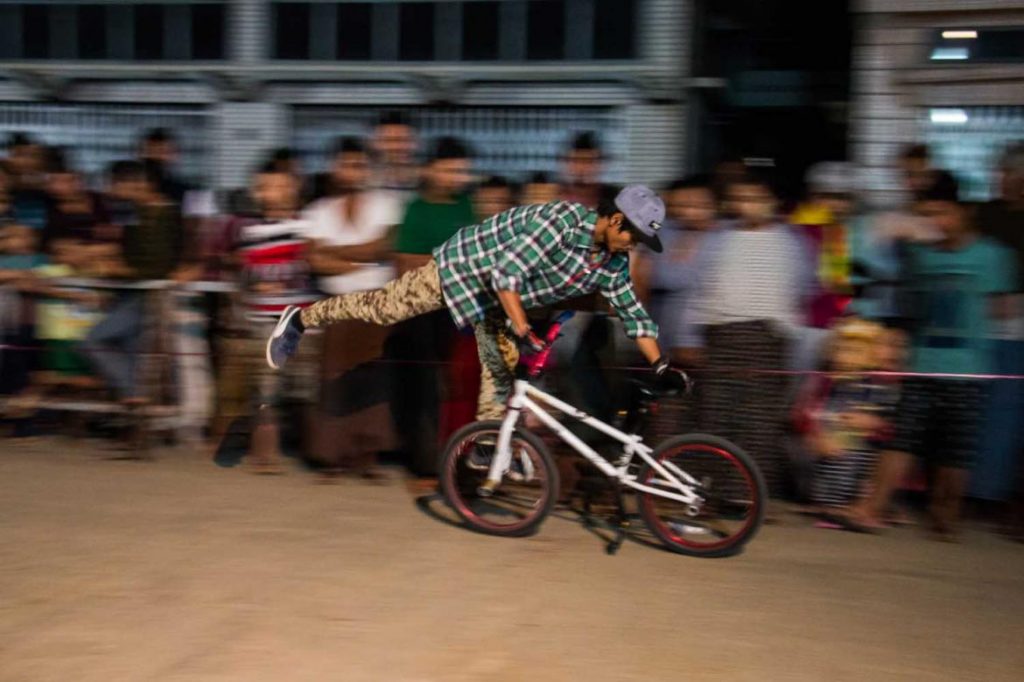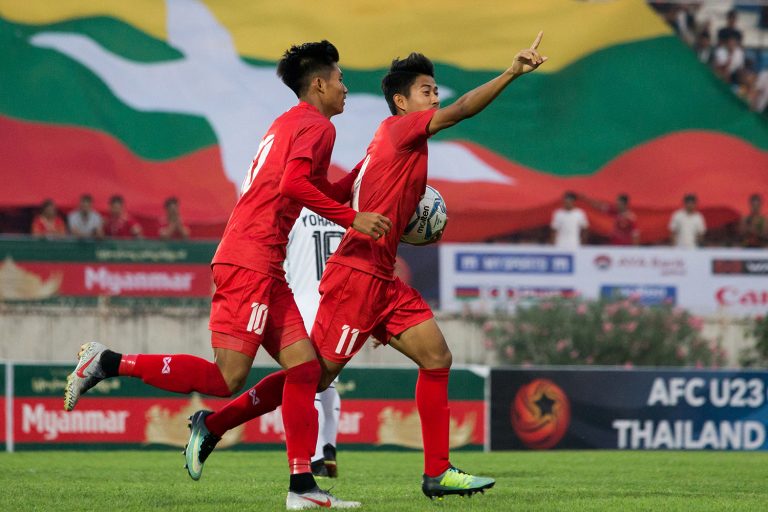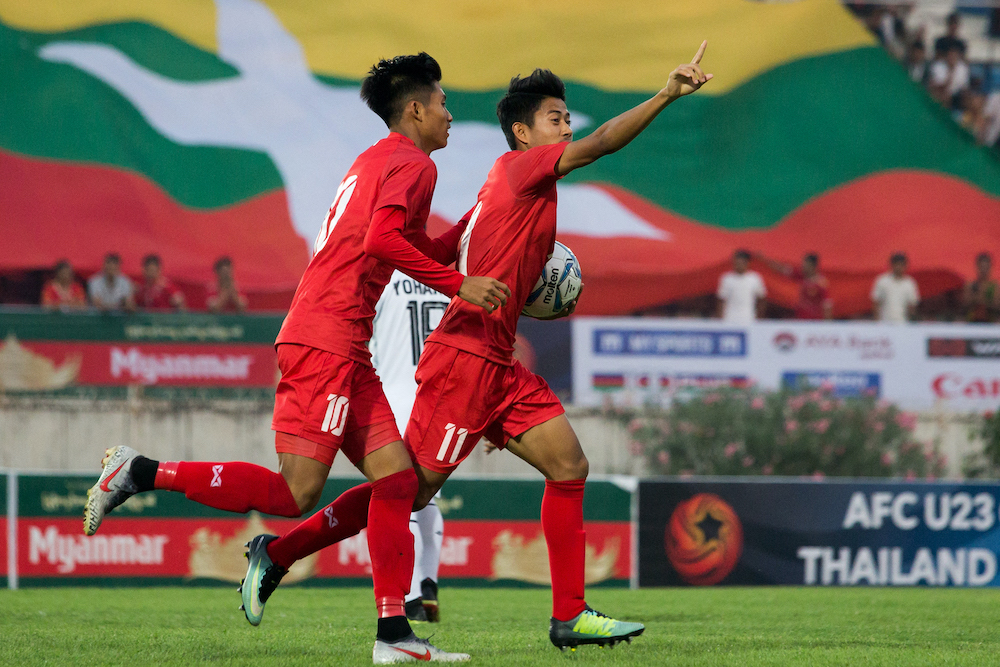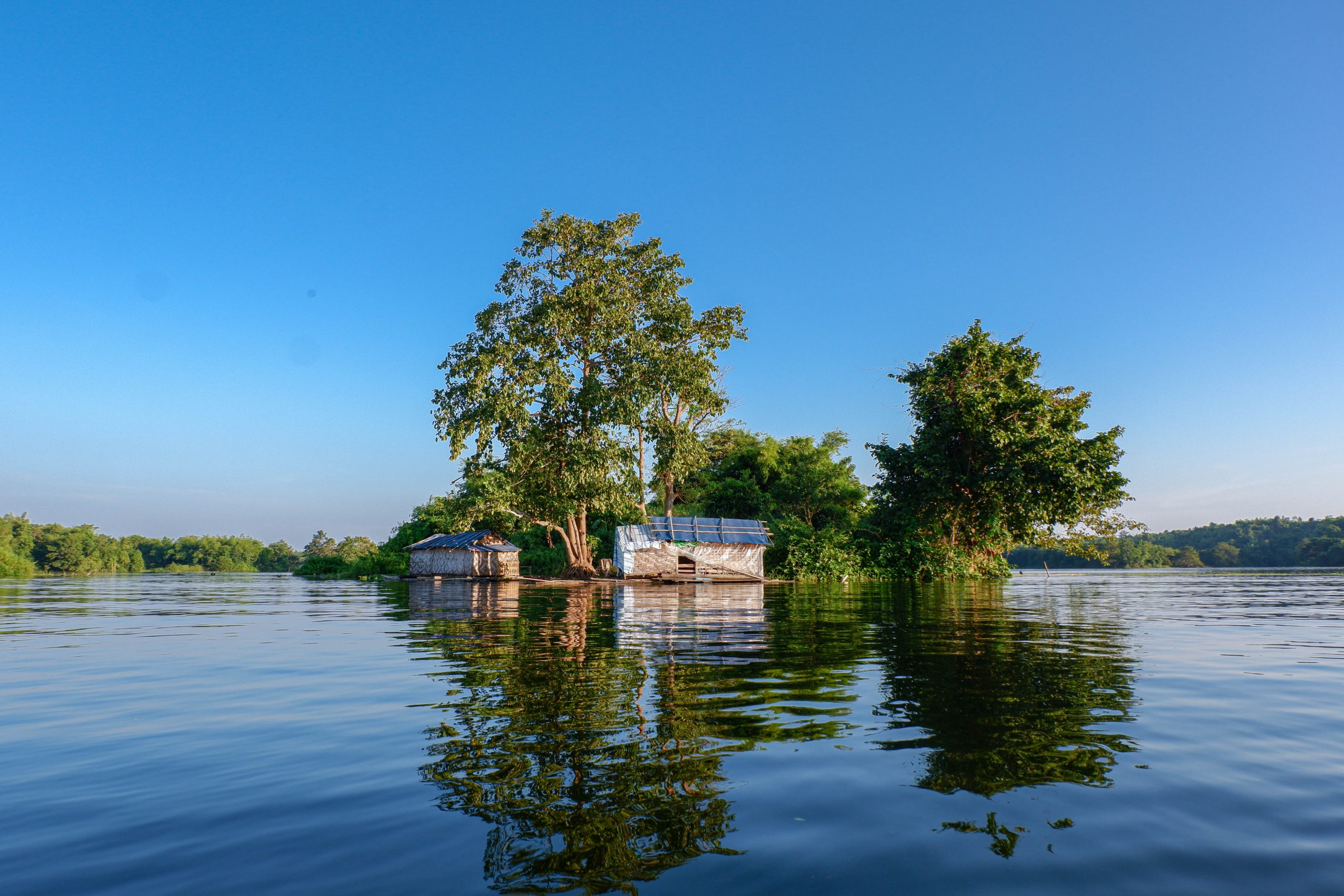Improved access to the internet has helped breed a new generation of BMX riders in Myanmar – but a stumbling block many of them face is getting permission from their parents.
Words & Photos NYEIN SU WAI KYAW SOE | FRONTIER
LIKE MOST fans of obscure sports in Myanmar, Ko Htet Wai Yan Oo, 22, became passionate about BMX riding after discovering videos on the internet.
“There were hardly any bikes at the time,” Htet Wai Yan Oo said of trying to buy his first BMX bike in 2013. “I eventually managed to find one, but it wasn’t a BMX bike, so I had to use that to try and learn tricks.”
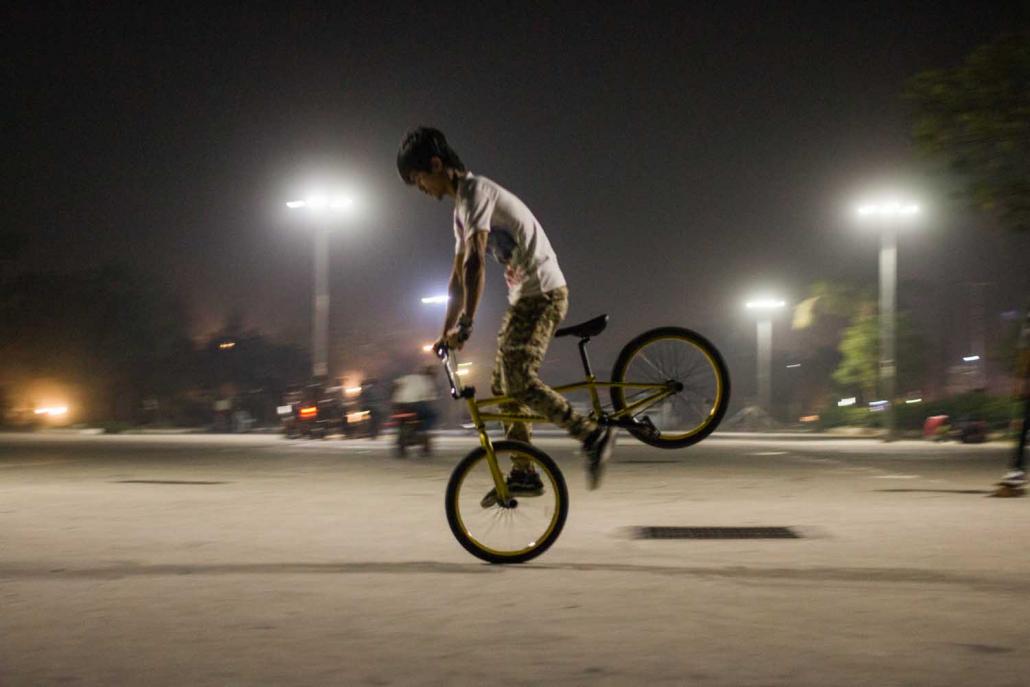
Nyein Su Wai Kyaw Soe | Frontier
There are about 100 BMX riders in Myanmar, most of whom live in Yangon. The favourite hang-out spot for those riding in the commercial capital is under Hledan Bridge during the week, and at People’s Park at the weekend. Many riders use the BMX Riders Myanmar Facebook group to organise meet-ups and exchange tips.
Support more independent journalism like this. Sign up to be a Frontier member.
While freestyling and racing are the most popular forms of BMX riding in Myanmar, Htet Wai Yan Oo is one of a handful of “flatland” riders in the country. Flatland is performed on smooth surfaces, and is often described as a more artistic form of cycling.
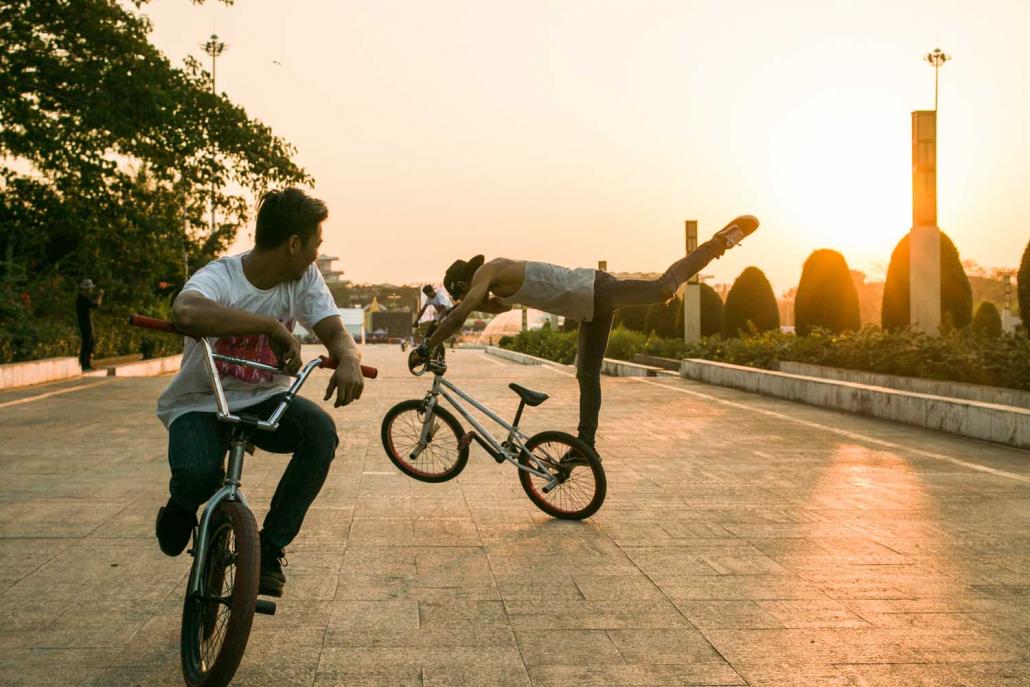
Nyein Su Wai Kyaw Soe | Frontier
Flatland bikes tend to have a short frame and high seat, while street BMX bikes have a long frame but a low seat.
“I realised my [first] bike was for street riding, not a flatlander, so I had to practice flatland tricks using a street bike. It was very risky and difficult,” he said.
When he first started practicing, Htet Wai Yan Oo was studying at a university in Nay Pyi Taw. The capital’s wide and largely empty streets should be the perfect place to practise a sport like BMX riding, but Htet Wai Yan Oo said he faced many problems.
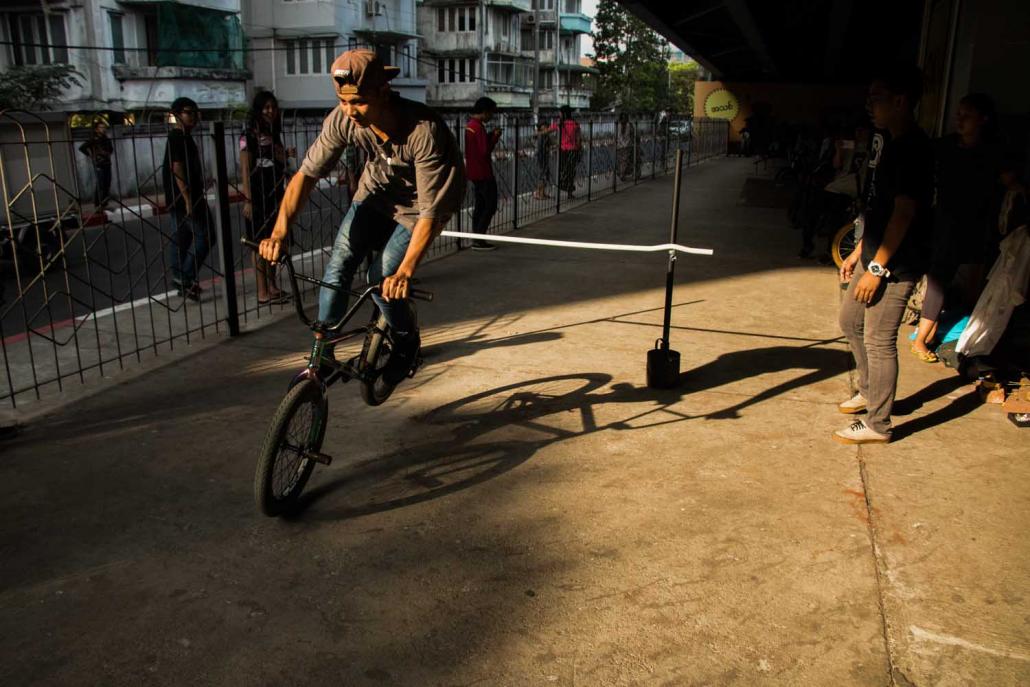
Nyein Su Wai Kyaw Soe | Frontier
“There was no one riding BMX, and people didn’t know what it was; they thought I was riding a bike for children so they made fun of me and my bike. I started to get embarrassed about riding and started practicing at night so no one could see me,” he told Frontier.
After graduating, Htet Wai Yan Oo returned to his hometown of Mandalay but still had no luck finding fellow BMX riders. It was only when he searched on Facebook and found the BMR group that he began to learn about the country’s small but growing BMX fraternity.
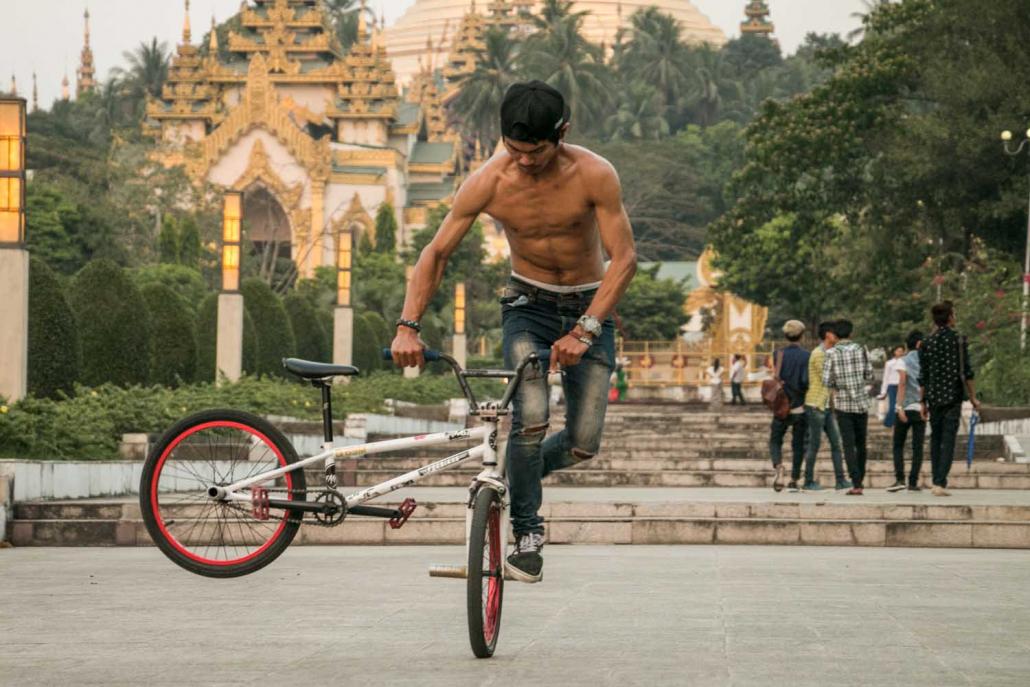
Nyein Su Wai Kyaw Soe | Frontier
Today there are BMX groups in Yangon and Mandalay, as well as Maubin, Ayeyarwady Region, and Mawlamyine, Mon State.
Htet Wai Yan Oo’s father U Soe Myint Oo could not understand the appeal of BMX riding when his son started.
“At first I told him not to ride because I thought it was a bit dangerous, but now I see how skilful he has become and how much he enjoys it,” Soe Myint Oo told Frontier.
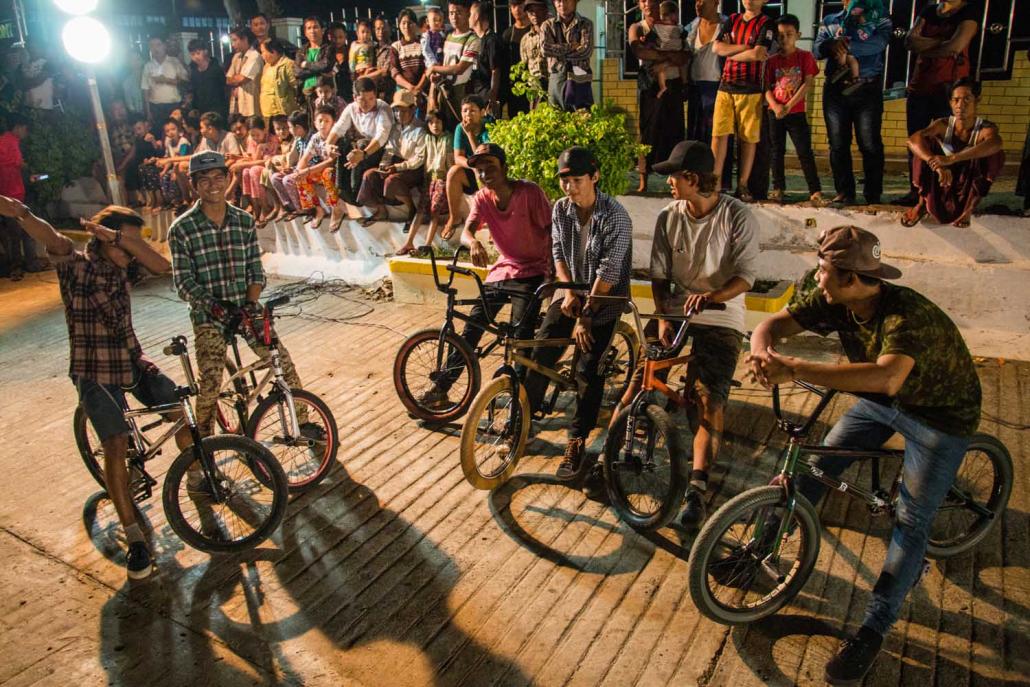
Nyein Su Wai Kyaw Soe | Frontier
The reluctance from older generations to embrace BMX riding is fairly typical. Most of the riders interviewed for this article told Frontier their parents tried to discourage them, but said their passion for the sport was too strong to be deterred.
Like Htet Wai Yan Oo, the parents of Ko Thein Tun Win, 23, were unhappy when they discovered his newfound love.
“When I did my first trick, a ‘bunny hop’, I was so happy to be able to do it, but then my parents scolded me. They said, ‘What happens if you break your leg or you get injured? You have a job.’”
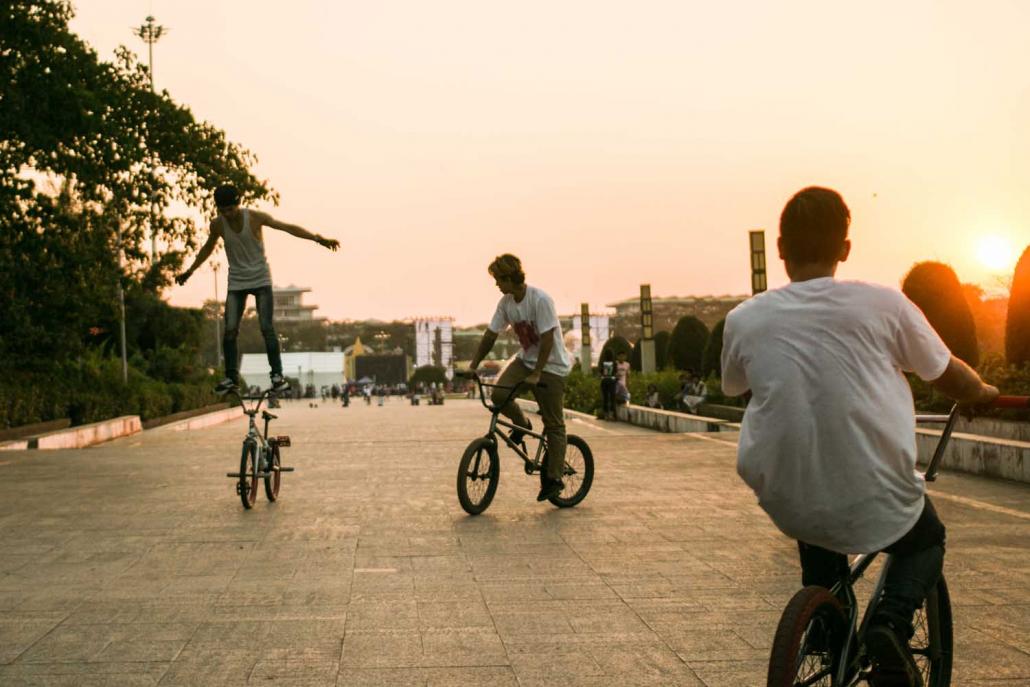
Nyein Su Wai Kyaw Soe | Frontier
His parents were not wrong. Thein Tun Win said he has picked up many small injuries while riding, but the risk is what he enjoys most about the sport.
“I get injured every time I ride, but it proves I am trying my best. Getting injuries and cutting myself; that has become my friend,” he told Frontier.
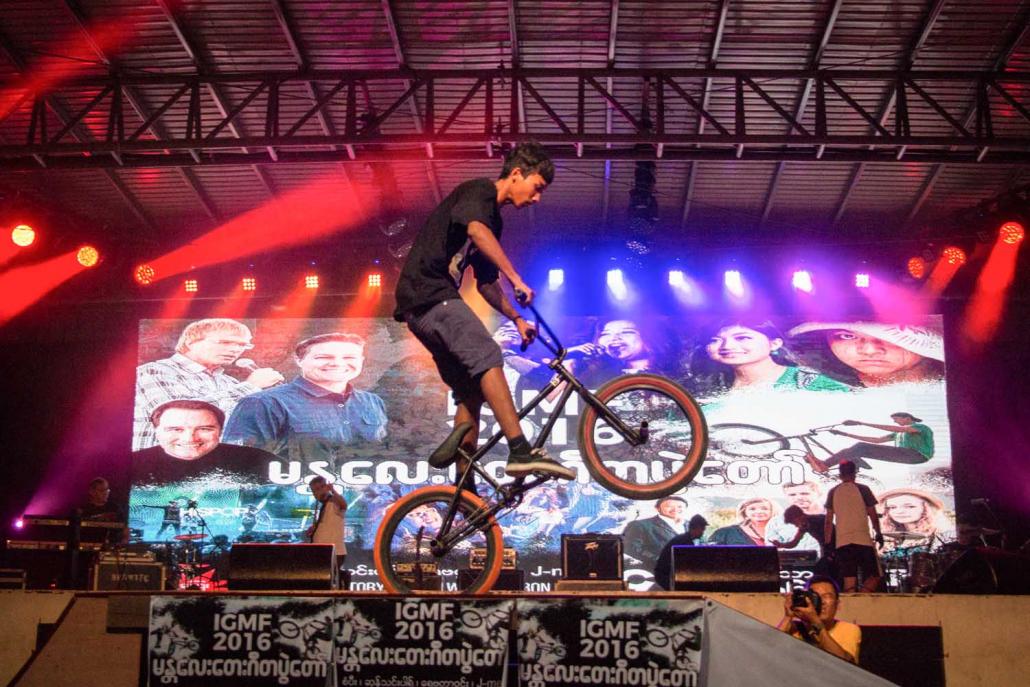
Nyein Su Wai Kyaw Soe | Frontier
Thein Tun Win said he wants to compete in other countries and is aiming to travel to the “Bangkok Dangerous BMX Street Jam” in Thailand – an event name his parents are unlikely to be too pleased about.
Most of the BMX riders in Myanmar have Ko Naing Ye, 27, to thank for having bikes of their own.
After learning about the growing BMX scene in Myanmar via Facebook, Naing Ye saw a business opportunity and tried to establish the country’s first BMX shop. It wasn’t an easy task. Emails and letters to some of the biggest BMX brands in the region, and globally, went unanswered, and it was only after he got in touch with members of BMR that he started to find locations where he could buy BMX bikes abroad and re-sell them in-country.
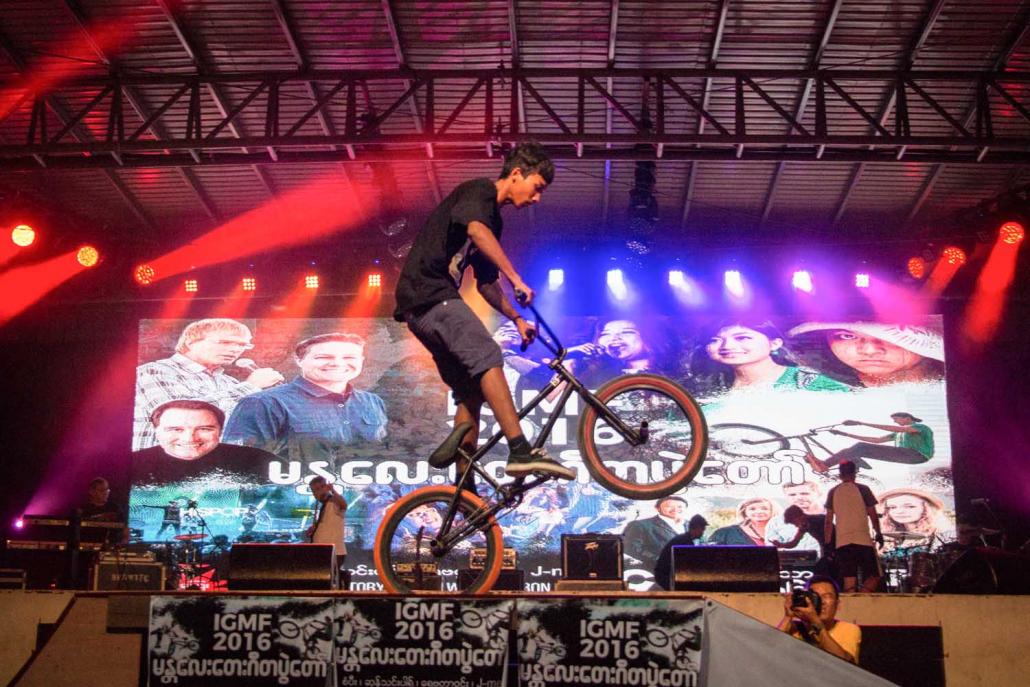
Nyein Su Wai Kyaw Soe | Frontier
Alongside other riders, he helped organise Myanmar’s “BMX Jam”, which was held in Yangon in July last year, and in December he opened his first BMX shop.
“In the last two months I’ve learned my first trick, the Bunny Hop, and I’m practising a few others. But I have a wife and a son, so I can’t focus all my time on riding. But I can focus hard on my business; making a BMX business is my first priority, and riding a BMX is my second.”


